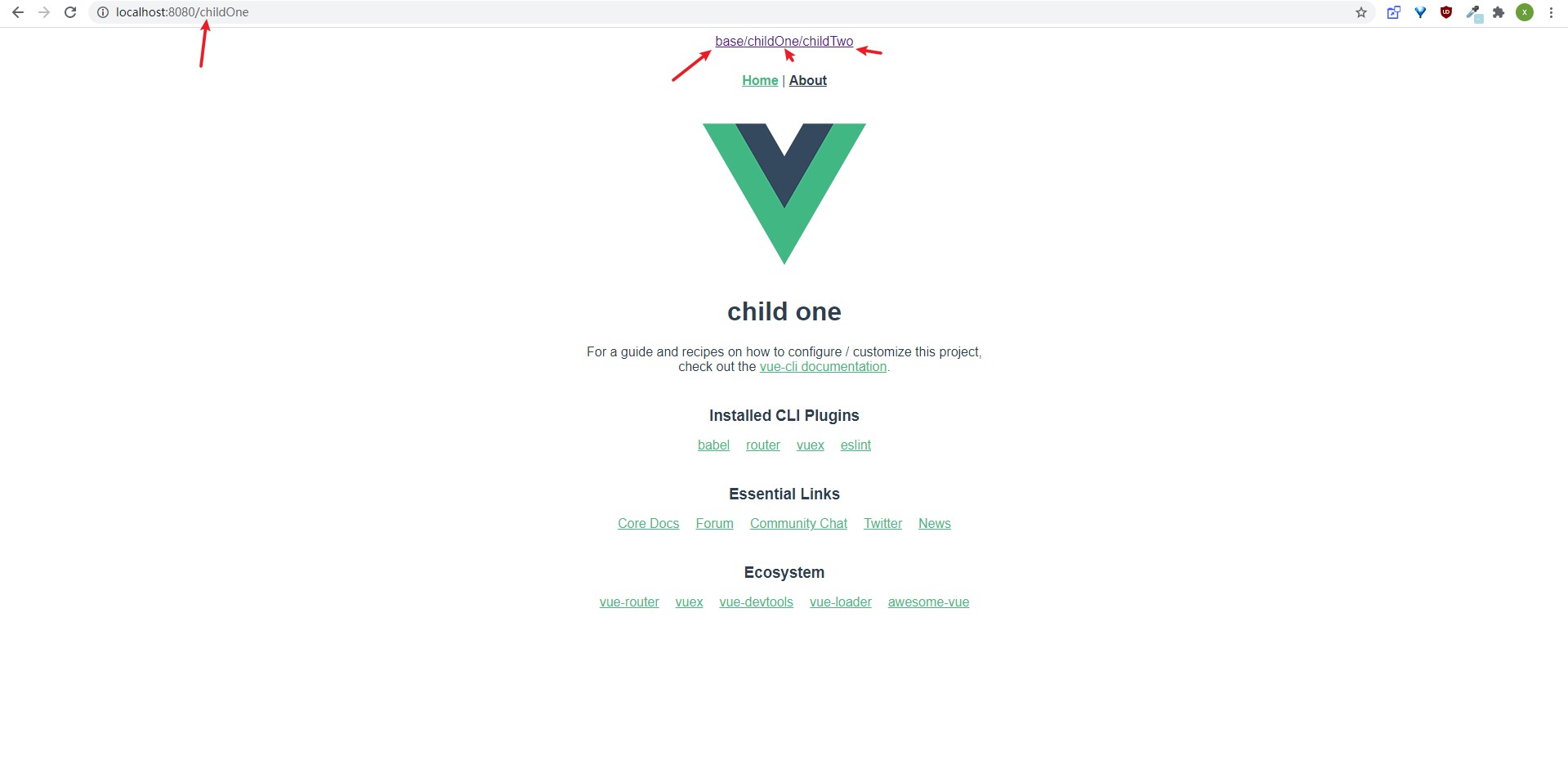Qiankun 微前端框架初探(vue2)
# Qiankun 微前端框架初探(vue2)
qiankun 中文文档 (opens new window)
# 主应用
1、基于 @vue/cli 创建 vue2 项目
vue create vue-main

2、下载 qiankun
npm i qiankun -S
3、配置 mian.js
import Vue from 'vue'
import App from './App.vue'
import router from './router'
import store from './store'
// 导入qiankun.js
import { registerMicroApps, setDefaultMountApp, start } from 'qiankun'
Vue.config.productionTip = false
new Vue({
router,
store,
render: (h) => h(App)
}).$mount('#app')
// 注册子应用
registerMicroApps([
{
name: 'vue app', // 子应用名称
entry: '//localhost:7101', // 子应用入口
container: '#container', // 子应用所在容器
activeRule: '/childOne' // 子应用触发规则(路径)
},
{
name: 'vue app2', // 子应用名称
entry: '//localhost:7102', // 子应用入口
container: '#container', // 子应用所在容器
activeRule: '/childTwo' // 子应用触发规则(路径)
}
])
// 启动默认应用
setDefaultMountApp('/')
// 开启服务
start()
4、配置 App.vue
<template>
<div id="app">
<a href="/">base</a>
<!-- 子应用 跳转 -->
<a href="/childOne">/childOne</a>
<a href="/childTwo">/childTwo</a>
<!-- 主应用容器 -->
<router-view></router-view>
<!-- 子应用容器 -->
<div id="container"></div>
</div>
</template>
# 子应用
1、基于 @vue/cli 创建 vue2 项目
vue create vue-childOne

子应用无需安装 qiankun
2、配置 main.js
/* eslint-disable no-undef */
import Vue from 'vue'
import VueRouter from 'vue-router'
import App from './App.vue'
import routes from './router'
Vue.config.productionTip = false
let router = null
let instance = null
function render(props = {}) {
const { container } = props
router = new VueRouter({
base: '/childOne',
mode: 'history',
routes
})
instance = new Vue({
router,
render: (h) => h(App)
}).$mount(container ? container.querySelector('#app') : '#app')
}
// webpack打包公共文件路径
if (window.__POWERED_BY_QIANKUN__) {
__webpack_public_path__ = window.__INJECTED_PUBLIC_PATH_BY_QIANKUN__
}
// 独立运行
if (!window.__POWERED_BY_QIANKUN__) {
render()
}
// 生命周期
export async function bootstrap() {
console.log('[vue] vue app bootstraped')
}
export async function mount(props) {
console.log('[vue] props from main framework', props)
// storeTest(props);
render(props)
}
export async function unmount() {
instance.$destroy()
instance.$el.innerHTML = ''
instance = null
router = null
}
3、配置 router/index.js
import Vue from 'vue'
import VueRouter from 'vue-router'
import Home from '../views/Home.vue'
Vue.use(VueRouter)
const routes = [
{
path: '/',
name: 'Home',
component: Home
},
{
path: '/about',
name: 'About',
// route level code-splitting
// this generates a separate chunk (about.[hash].js) for this route
// which is lazy-loaded when the route is visited.
component: () => import(/* webpackChunkName: "about" */ '../views/About.vue')
}
]
export default routes
4、配置 vue.config.js
const path = require('path')
const { name } = require('./package')
function resolve(dir) {
return path.join(__dirname, dir)
}
const port = 7101 // dev port
module.exports = {
/**
* You will need to set publicPath if you plan to deploy your site under a sub path,
* for example GitHub Pages. If you plan to deploy your site to https://foo.github.io/bar/,
* then publicPath should be set to "/bar/".
* In most cases please use '/' !!!
* Detail: https://cli.vuejs.org/config/#publicpath
*/
outputDir: 'dist',
assetsDir: 'static',
filenameHashing: true,
// tweak internal webpack configuration.
// see https://github.com/vuejs/vue-cli/blob/dev/docs/webpack.md
devServer: {
// host: '0.0.0.0',
hot: true,
disableHostCheck: true,
port,
overlay: {
warnings: false,
errors: true
},
headers: {
'Access-Control-Allow-Origin': '*'
}
},
// 自定义webpack配置
configureWebpack: {
resolve: {
alias: {
'@': resolve('src')
}
},
output: {
// 把子应用打包成 umd 库格式
library: `${name}-[name]`,
libraryTarget: 'umd',
jsonpFunction: `webpackJsonp_${name}`
}
}
}
以上就完成了 子应用的配置
按照以上步骤再生成一个 vue-childTwo
修改 main.js 的 router 的 base 为 /childTwo
修改 vue.config.js 中 port 为 7102
以上就完成了第二个子应用的配置,如需更多子应用,照上步骤即可
# 运行
- 主应用: vue-main 运行
npm run serve端口号默认为: 8080 - 子应用: vue-childOne 运行
npm run serve端口号为: 7101 - 子应用: vue-childTwo 运行
npm run serve端口号为: 7102
打开主应用地址 http://localhost:8080 (opens new window) 即可。
